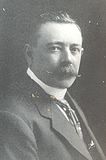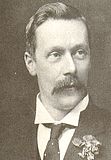Background
By 1917, World War I was placing an enormous strain on the Victorian economy. While the Liberal party had won the 1914 election with a large majority, many in the party were becoming increasingly dissatisfied with the government's actions on difficulties in the rural areas. The Victorian Farmers' Union emerged as a party, was gathering support and ran candidates for the first time.
The Labor Party had undergone a split in 1916 over the Conscription debate and some of its pro-conscription members led by Prime Minister Billy Hughes left the party and joined with the Liberals to form the Nationalist Party. At the state level, however, some of these members ran as National Labor candidates.
The breaking point for the Nationalist government was Premier Alexander Peacock's decision to increase rail fares to rural areas. The party split into a pro-Peacock Ministerialist faction (mostly composed of city-based members), and an opposition faction led by John Bowser, composed mostly of country members. The two factions ran candidates against each other in most Nationalist seats. This did not effectively split the vote, as Victoria had introduced compulsory preferential voting for this election, and most of the preferences resulting from multiple Nationalist candidates were kept within the party. After the election, on 29 November, the rural faction of the Nationalist government led by Bowser won control of the party, ousting Peacock.
This page is based on this
Wikipedia article Text is available under the
CC BY-SA 4.0 license; additional terms may apply.
Images, videos and audio are available under their respective licenses.


